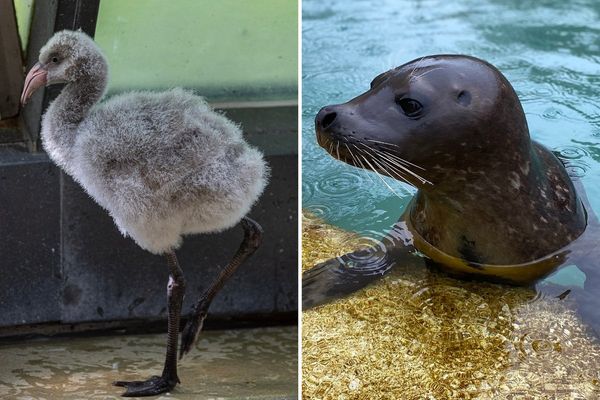CHESTERFIELD, Mo. _ Tad Yankoski already knew he was going to have a busy month.
Yankoski, senior entomologist at the Sophia M. Sachs Butterfly House in Chesterfield, got an unusual shipment on March 10 that would excite most any insect expert: Black market praying mantid eggs that had been confiscated by U.S. Customs and Border Protection from a shipping facility in Kentucky. With all the proper USDA certifications, the butterfly house in Faust Park was picked to care for the egg cases that could contain hundreds of insects.
Fast forward less than a week, and Yankoski's busy month turned surreal.
By March 16, the butterfly house closed to all visitors to prevent spread of the new coronavirus. There would be no Blue Morpho Mardi Gras celebration, though the butterflies still flutter around the conservatory today oblivious to the pandemic.
"It's really quiet around here," Yankoski said this week as he's left with the primary responsibility of caring for more than 10,000 insects most days _ a job usually done among about six people including employees, interns and volunteers.
And then there are the new mantid eggs, which had already hatched more than 500 insects by the end of March.
"The job of the animal keeper doesn't stop during a pandemic," Yankoski said. "They don't know what's going on. They still need to be fed."
A BLACK MARKET SHIPMENT
"This is like Christmas," Yankoski said March 10 when the shipment of black market egg cases arrived packed in two repurposed Greek yogurt containers. "Some people get a puppy. I get 1,000 babies."
The eggs were found Feb. 26 disguised inside Xbox video game controllers in a package flagged by U.S. customs agents in Louisville, Ky., CBP spokesman Steven Bansbach said.
The package was being sent from Germany to Texas, but was searched because both the shipper and receiver have past violations for the illegal importation of mantid larvae, Bansbach said.
"There is a large network for people that like to have exotic animals," Bansbach said. "You may not realize it, but a lot of people want a praying mantis as a pet and they are kind of in cahoots with each other."
Online prices for some of the insects can reach more than $100 in the U.S. and dozens or hundreds can hatch from each egg case.
The praying mantis is part of a class of insects called mantids. While some types of mantids are already widespread in the U.S., other exotic species popular with pet owners are illegal to import into the country.
Mantids are aggressive predators of other insects _ and even in some cases prey as large as a hummingbird. So if new foreign species were to become established in the wild they could disrupt ecosystems by preying on native insects that pollinate agriculture and other plants, Yankoski said.
The mantid eggs that have hatched at the butterfly house include some of the most striking types: dead leaf mantids, zebra mantises, ivory boxer mantids, Tanzanian ground mantids, ghost mantids and orchid mantids, which can look like elegant flowers come to life.
By the end of March, many of the about 500 young insects were eating flies.
"That's a milestone," Yankoski said. "It's like the first day of kindergarten."
WHEN THE PRAYING MANTIS PREYS
Yankoski can't raise all 500 to adulthood in the 195-square-foot lab at the butterfly house, and plans to send some to other USDA-permitted zoos and insectariums. As they grow, they will have to be kept separately because they are known to eat each other.
If they are bred in captivity, a challenge for entomologists like Yankoski is that _ yes, it is true _ the female praying mantis will often eat the male.
"You can give the female a cricket while the mating is happening so she's occupied," Yankoski said. "And maybe the male can skedaddle, but you do have to anticipate that some of your males are, for lack of a better word, expendable."
Most of the mantids take five to six months to mature into adults.
"We're excited to show that something like praying mantids can be beautiful creatures," Yankoski said. "And these are some really special species, but I do miss the visitors now because they can't see a lot of the cool stuff happening."
Still, Yankoski said the butterfly house will display many of the once-illicit mantids this summer or fall when, he hopes, visitors will be back and able to visit the butterfly house again.







